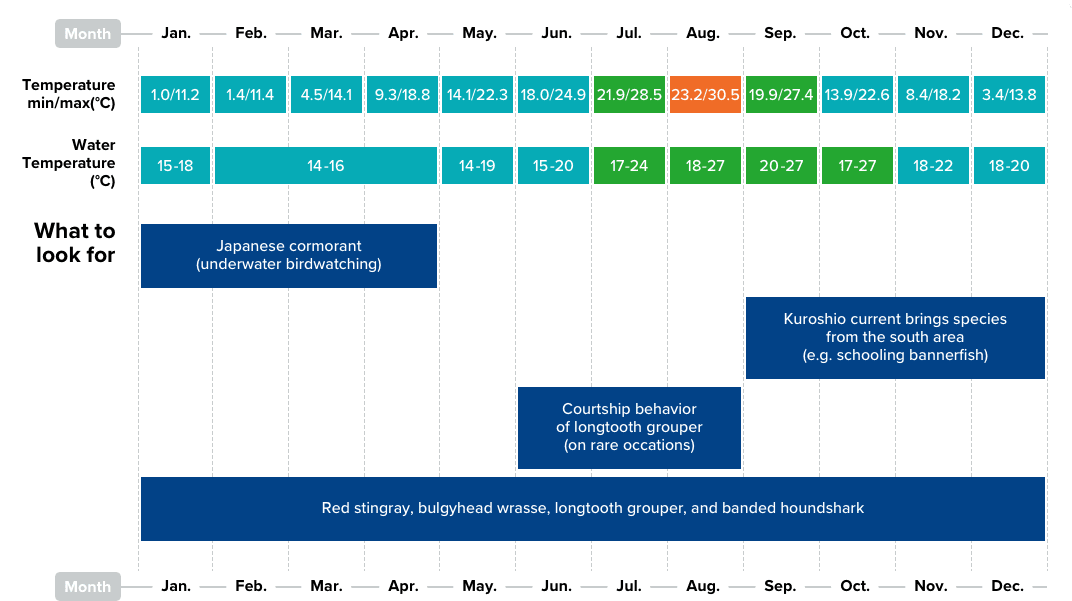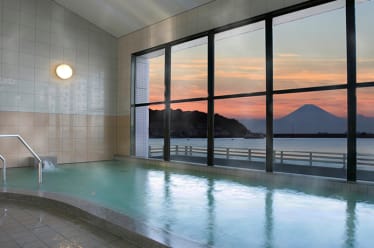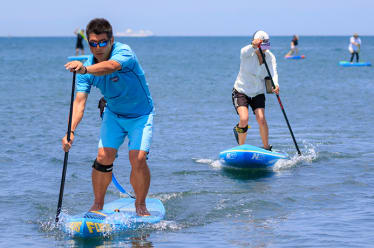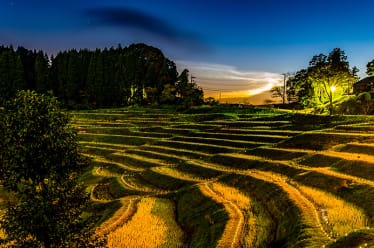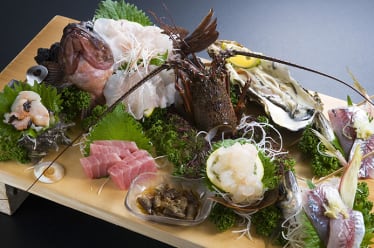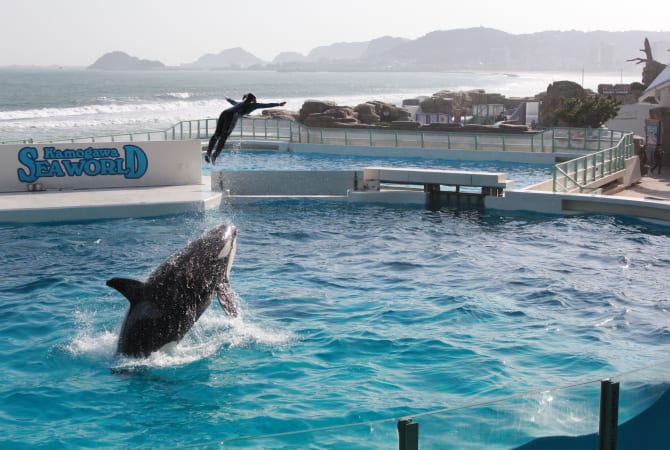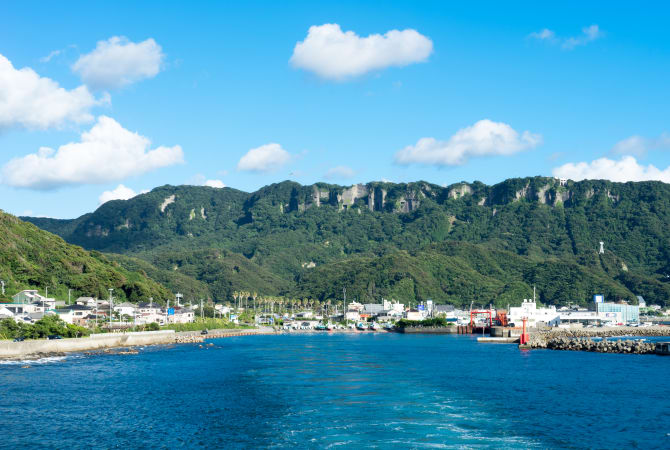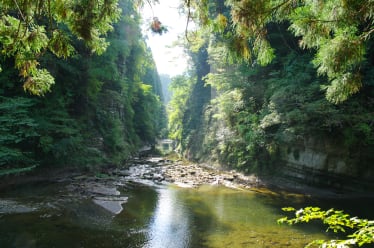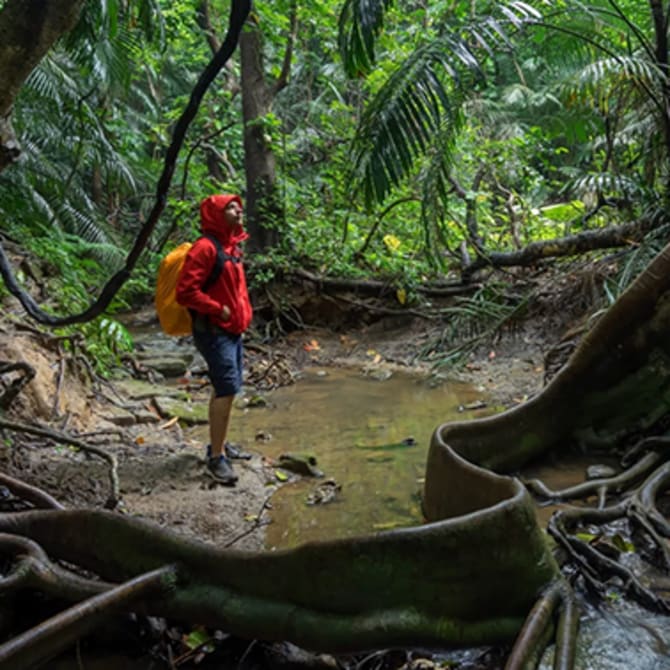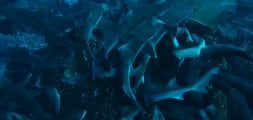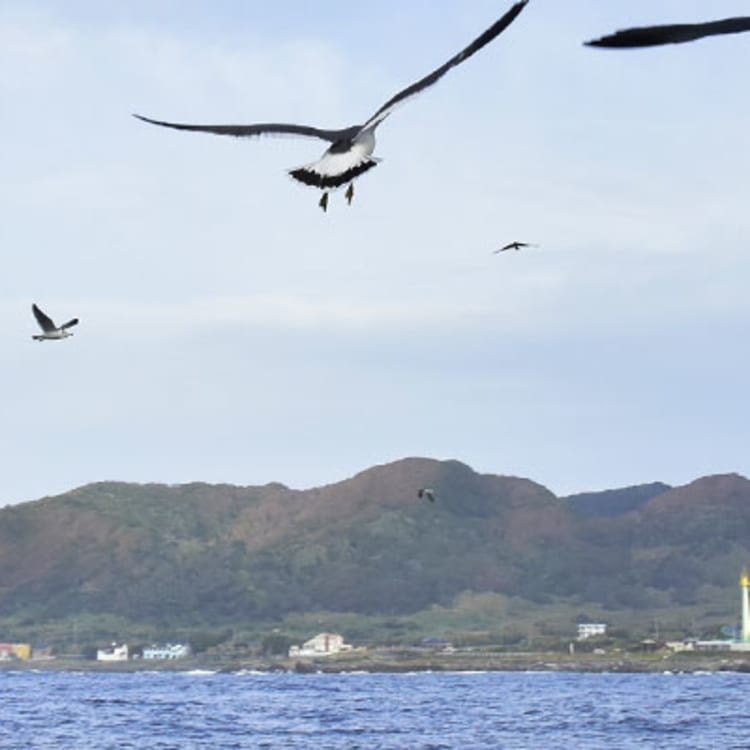
Chiba Diving Guide
Chiba Prefecturein the southeast of the Kanto Region, is famous as the home of Narita Airport, the largest international airport in Japan. Much of Chiba is made up of the Boso Peninsula, sticking out into the Pacific Ocean, making it an ideal location for marine activities such as fishing, surfing, and of course, scuba diving. Easily accessible from Tokyo and boasting many fun dive sites, Chiba is an ideal diving destination.
Most of Chiba’s dive sites are located on the southern coast of the peninsula, where the Kuroshio Current arrivesbringing warm, clear, and nutrient-rich water from the south. Tokyo Bay and its abundant marine life lie on the west side of the peninsula, and on the east side the Kuroshio Current meets the Oyashio Current, creating a unique environment.
What you can see
Hundreds of banded houndsharks creating a tornado in Ito.
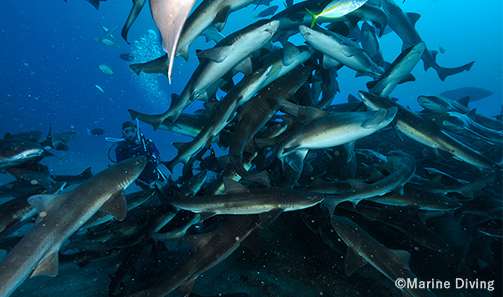
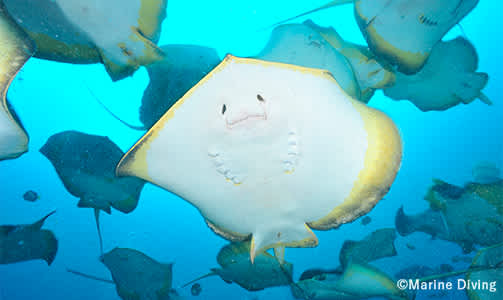
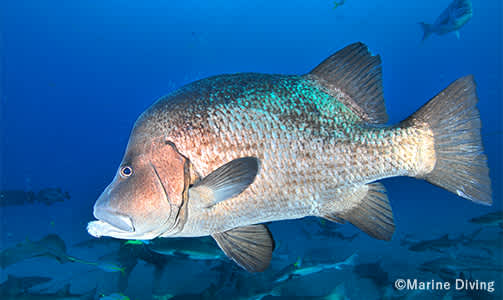
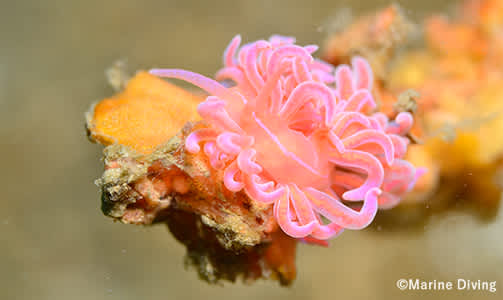
Season Calendar for Divers
East (Outer) Coast
KATSUURA
Katsuura boasts a shore dive site in Shimura Beach as well as two boat dive sites along with a selection of dive sites that only open seasonally.. Isomura is a popular boat dive site where many pelagic fish such as Japanese amberjack, yellowtail amberjack, and greater amberjack appear.
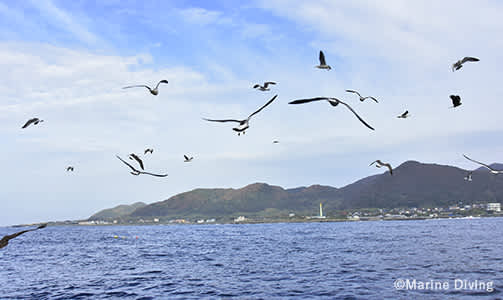
NAMEGAWA
Namegawa has a number of boat dive sites. There is Shinbama, with its assortment of marine life such as lumpfish, appearing from December to June, as well as an abundance of beautiful nudibranchs. Kuroiwaoffers cavern diving, where big fish like bullhead sharks and longtooth groupers can sometimes be found hiding under the overhang, schools of half-lined cardinal flit around, and shellfish line the cave.
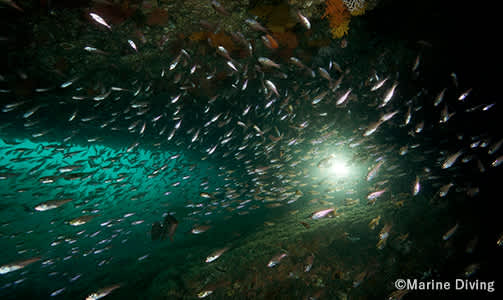
South Coast
ITO
Possibly the most internationally well-known dive site in Chiba,divers from around the world come to meet the hundreds of banded houndsharks that live here, as well as the large populations of red stingray, bulgyhead wrasse, and longtooth grouper. The dive site at the heart of this popularity is Okimae-ne, a boat dive site located where the sharks gather. From January to early April, you can even enjoy birdwatching underwater, as Japanese cormorant dive into the ocean in search of prey.
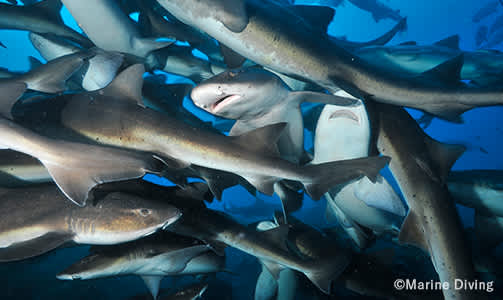
NISHIKAWANA
Located at the very tip of the Boso Peninsula, Kuroshio Current hits this area directly, leading to a relatively high water temperature year-round and an abundance of marine life. Nishikawana offers a diverse assortment of dive sites, from cavern to sandy bottom. Ohne, one of these boat dive sites, offers the chance to observe many of the giant beard grunts Nishikawana is famous for. Schools of pelagic fish also start to appear around May, and if you’re lucky, you may be able to see a few hundred Japanese eagle rays!
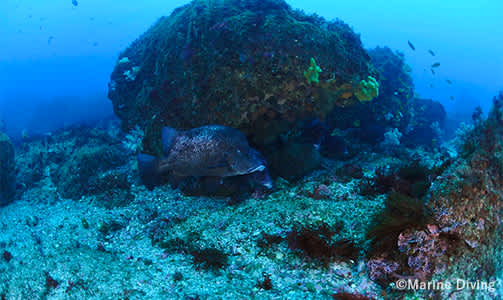
BANDA
A quiet dive site beloved by French diver and fee diving world record holder Jacques Mayol,offering both shore dive sites and boat dive sites. Matsune features a bommie in which beautiful soft corals bloom, and at Karoune one can see huge school of Japanese sea perch, silver-stripe round herring, and many other fish .
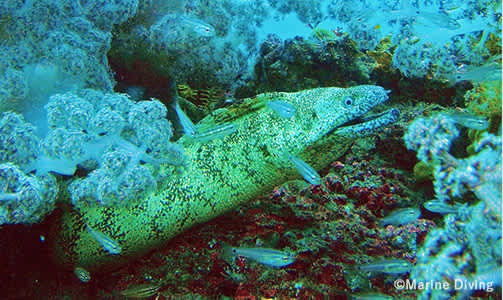
HASAMA OCEAN PARK
One of the most unique dive sites in Japan, famous for its underwater shrine and the friendly bulgyhead wrasse that lives there. Sunfish and whale shark can also be seen here on occasion.
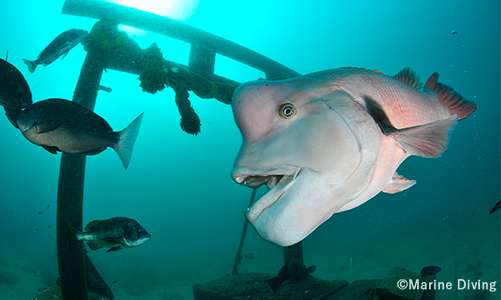
KENBUTSU
Kenbutsu has both shore dive site and boat dive sites. Oki-gyosho features an artificial fish reef in place for fishing, and the sea sponges that grow from it create the perfect home for small sea creatures such as frogfish. Triangle, a boat dive site, hosts a thriving population of several different kinds of corals, providing a great environment for small fish and juveniles.
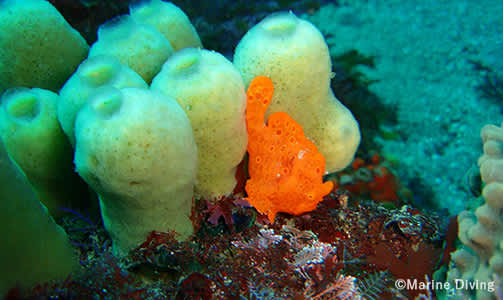
OKINOSHIMA
Okinoshima is a small island connected to the peninsula by a sandbank and easily accessible by foot. It is surrounded by rock reef and is home to a bounty of marine life. Okino-chinsen offers wreck diving where you can see the creatures that live in the soft coral growing from the shipwreck. Okino Beach is a great dive site for macro photography, especially for nudibranch lovers.
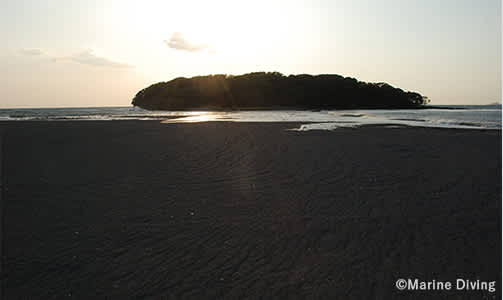
Inner (West) Coast
KATSUYAMA
The Chiba dive site closest from Tokyo. There are dive sites around Ukishima, an uninhabited island only a small distance away from Katsuyama’s fishing port, and the two rock islands west of it. At Senju Drop, on the west of Ukishima, close to the Tokyo submarine canyon, divers can sometimes catch a glimpse of deep-sea fish.
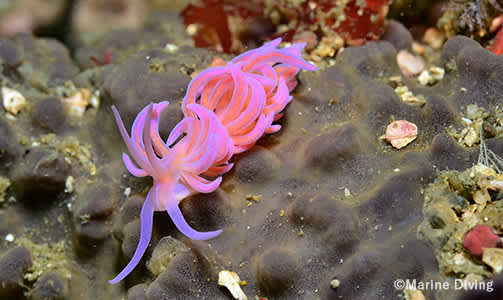
How to get there
Great for Day Trip from Tokyo
Chiba is one of the best destinations for a day trip from Tokyo. Even Ito, a popular dive site for shark diving in Chiba and one of the furthest from Tokyo, is only about 3 hours away by train (Model schedule below). There are 4 ways to get to Chiba: by train, bus, car, or taxi. Use whichever suits your trip the most. If you land in Narita International Airport in Chiba, it’s also possible to head directly to the dive site.




















































